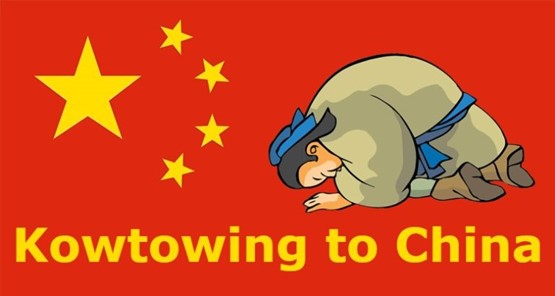President Rodrigo Duterte China’s errand boy since day one
On paper, an amicable relationship between Manila and Beijing does not sound that controversial in light of the geographic and historical ties shared by the two nations, but the reality of the political moment at which Duterte came into power paints a completely different picture.
Leading up to the 2016 transfer of power, the Philippines had already fallen prey to years of bullying by Chinese vessels in the South China Sea, done in service of the Xi government’s ultimate plan to gain control of almost all the maritime territory and the bodies of land located within that region.
The most notable clash dates back to 2012 when Chinese military forces wrestled control of Scarborough Shoal away from the Philippines following a military standoff, but the two nations are still embroiled in a dispute over the Spratly Islands along with Taiwan, Vietnam Malaysia, and Brunei.
At the time, the situation was so dire that former Filipino president and Duterte’s predecessor, Benigno Simeon Aquino III, took China in January 2013 to the Permanent Court of Arbitration (PCA)—an international organization responsible for settling intergovernmental disputes— over the so-called “nine-dash line”—a fictive border drawn by China outlining the area it believes to be rightfully part of its jurisdiction, which encompasses around 90% of the South China Sea.
A final verdict refuting China’s claims was ultimately reached on July 12, 2016, less than two weeks after Rodrigo Duterte assumed the presidency on June 30.
As the leader of the nation that initiated the lawsuit against China, the incoming Filipino president was poised to score an early political victory fuelled by his nation’s triumph over its long-time adversary.
Instead, the supposedly tough and uncompromising new leader gave Beijing a free pass by choosing to disregard the reached ruling over China’s South China Sea activity, essentially sabotaging the progress that his nation had made on the issue.
However, as some experts have pointed out, there were reports that Duterte’s campaign coffers were flooded with donations from China during his 2016 election bid.
It should, therefore, come as no surprise that he would hold a position that prioritizes China’s interests over his own country’s.
In yet another devastating blow to the Philippines’ long-established foreign policy, Duterte moved, within the same year of his election, to sever the country’s 70-year alliance with the US, pursuing instead stronger ties with China, which had vowed to spend billions of dollars on building infrastructure in the Philippines.
In short, Duterte staked his country’s future as well as his own on China’s word, a bold move, yet one that would cost him dearly in the years to follow.
A losing bet on all counts
So how did the change of allegiances by the new leadership of the Philippines and its willingness to break long-held norms in order to curry favor with Beijing get rewarded?
Unsurprisingly, China took the inaction of Duterte following the 2016 PCA ruling as an invitation to continue violating the sovereignty of its South China Sea neighbors by attempting to force them out of their lawfully owned territory.
What came as a surprise, however, is that the Philippines was not spared from these aggressions, despite its new president going out of his way to befriend his Chinese counterpart and serve his interests.
Instead, Chinese-funded militia vessels have continued to illegally breach the Philippines’s exclusive economic zone (EEZ)— an area that the country has the uncontested right to exploit, as defined by the 1982 United Nations Convention on the Law of the Sea— and to harass Filipino fishermen attempting to operate there.
On March 7, 2021, the hostilities culminated in what could be perceived as a full-on invasion, when over 200 vessels belonging to China’s maritime militia forayed into the Philippines EEZ near Julian Felipe Reef (Whitsun Reef) and have maintained a presence in the area as recently as April.
The refusal of the intruding Chinese fleet to exit the area comes as direct defiance to a demand by Filipino Defense Secretary Delfin Lorenzana and is, according to experts, reminiscent of the 2012 Scarborough Shoal stalemate which did not bode well for the Philippines’ struggle to keep China’s territorial advances at bay.
